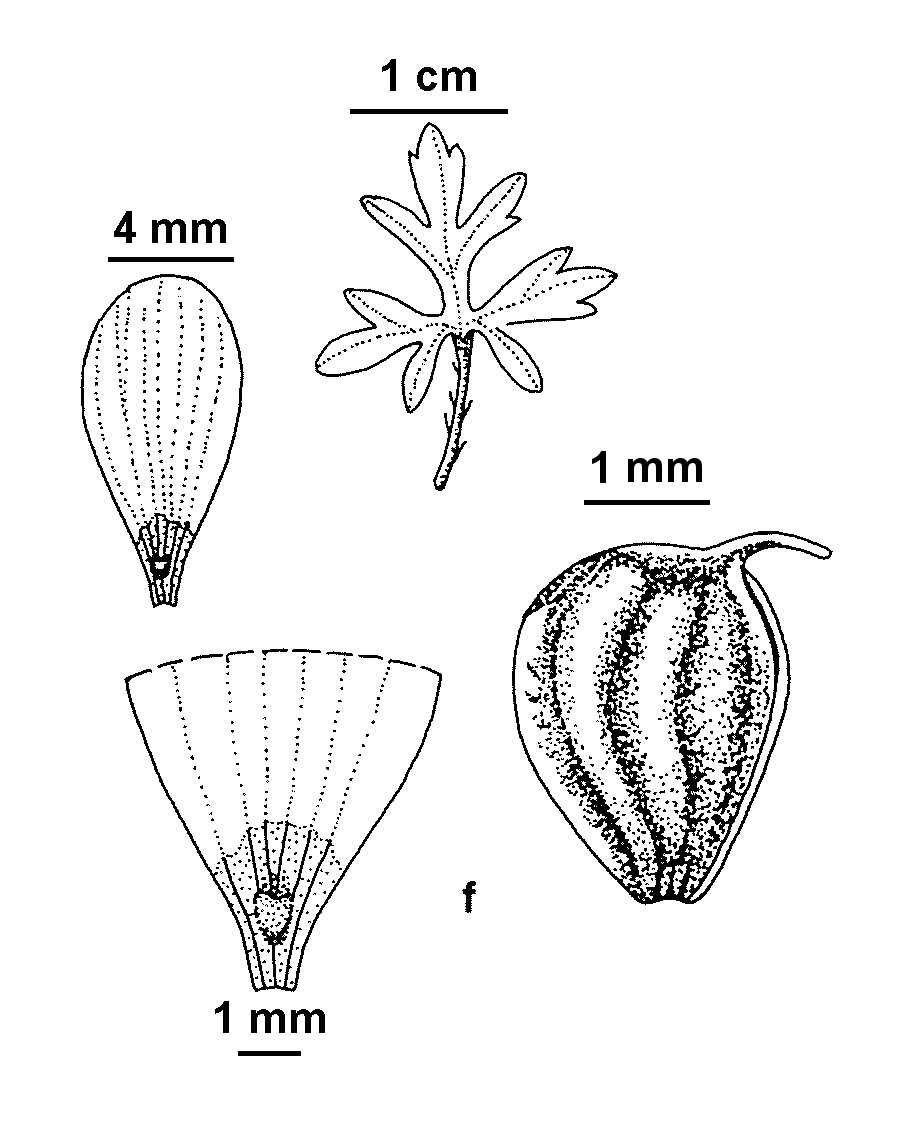Ranunculus glabrifolius
Hook. Shining ButtercupStoloniferous perennial to c. 30 cm high. Leaves mainly or entirely tufted at base; petioles 3–15 cm long; lamina trifoliolate to palmate, c. deltoid to circular in outline, 1–5 cm long and wide, glabrous or with a few appressed hairs, segments c. cuneate, toothed at apex or further lobed to c. midway. Flowering stems erect, exceeding leaves, 1–3-flowered; sepals 5, spreading, ovate, 4–8 mm long, appressedly hairy on back; petals 5–15, obovate, 7–10 mm long, 3–5 mm wide, yellow, glossy; nectary lobe largely fused to petal and forming a narrow pocket, truncate, emarginate or concave at apex, 0.5–1 mm long overall; stamens c. 30–40. Achenes usually 15–20, obliquely obovate to cuneate, 2–3 mm long, with 1–4 broad oblique to longitudinal ridges on sides; beak slender, curved, c. 1.5 mm long; receptacle glabrous or sparsely hispid. Flowers Sep.–Jan.
Wim, GleP, VVP, GipP, OtP, WaP, Gold, CVU, NIS, EGL, EGU, HSF, HNF, Strz, MonT, VAlp. Also SA, Tas. Widespread but not common, on and south of the Great Dividing Range. Occurring on damp ground in depressions or beside watercourses.
Very like R. papulentus (a species of more restricted occurrence) and able to be distinguished confidently only in the presence of mature achenes.
Walsh, N.G. (1996). Ranunculaceae. In: Walsh, N.G.; Entwisle, T.J., Flora of Victoria Vol. 3, Dicotyledons Winteraceae to Myrtaceae, pp. 35–63. Inkata Press, Melbourne.
 Spinning
Spinning


